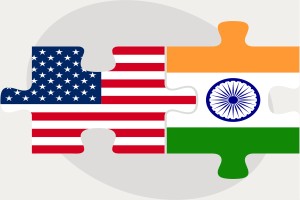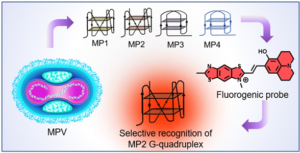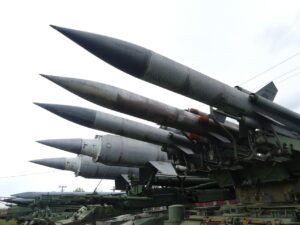
Washington D.C: The United States President Joe Biden hosted Prime Minister Narendra Modi on September 24, 2021, forging closer ties between two leading Indo-Pacific powers, the United States and India.
“As the world’s oldest and largest democracies, the United States and India are committed to values of freedom, pluralism, openness, and respect for human rights,” the White House officially stated in a release under the heading, “The United States and India – Global Leadership in Action”.
Following are the highlights of the statement released by the White House:
Working Together on the World Stage
- The U.S. Agency for International Development (USAID) has reached more than 56 million Indians with COVID-related health training, risk mitigation and vaccine information, and essential equipment since the beginning of the pandemic.
- For more than a half-century, the U.S. Centers for Disease Control and Prevention (CDC) has successfully collaborated with the Indian government to address India’s public health priorities. CDC has allocated approximately $16 million towards COVID-19 response in India since March 2020, to support country-level coordination, epidemiology and surveillance, case management, infection prevention and control, laboratory and other technical areas, in collaboration with the World Health Organization, the United Nations Children’s Fund, and other partners.
- Under the Quad, the United States and India are working on COVID-19 response and pandemic preparedness, infrastructure, space, clean energy, humanitarian assistance/disaster relief, cyber security, maritime security, resilient supply chains, approaches to 5G infrastructure deployment that leverage open and interoperable network architectures, and critical and emerging technologies.
- The United States and India are committed to continued partnership on cybersecurity, to include efforts to promote critical infrastructure resilience, collaboration to counter cyber-enabled crime such as ransomware, and cooperation to address shared cyber threats, including through workforce development, and exploring common cyber standards and promoting secure software development.
- The United States looks forward to continued collaboration in the Coalition for Disaster Resilient Infrastructure (CDRI) and welcomes opportunities to work with India in leveraging the Blue Dot Network to catalyze investment in sustainable infrastructure in Africa, Southeast Asia, and beyond. USAID has committed over $9 million towards supporting CDRI’s global leadership in this sector.
- Over the past year, the U.S. National Institutes of Health (NIH) funded nearly 200 research awards with collaborations involving Indian partners. In the past four years, the number of health research collaborations with India grew from 200 to nearly 330, and the number of Indian research organizations participating in NIH-funded research grew from nearly 100 to over 200.
- On October 28-29, 2021, the United States and India will co-host the fourth annual Indo-Pacific Business Forum (IPBF), which will bring together leaders in government, industry, media, and non-profits from across the Indo-Pacific. This marquee commercial diplomacy event underscores our joint commitment to a positive economic agenda for the Indo-Pacific region, advances policy developments, announces new investments, and builds relationships between the private sector and governments in the Indo-Pacific.
Also read: Modi, Biden talk democracy after Kamala Harris set the tone
Protecting the Planet and Powering the Future
- The United States and India are both committed to promoting a successful outcome at the 26th UN Climate Change Conference (COP26) in Glasgow later this year. Toward that end, the United States communicated an enhanced Nationally Determined Contribution to reduce economy-wide greenhouse gas emissions by 50-52 percent below 2005 levels in 2030.
- The United States is actively working with India to realize its ambitious goal of deploying 450 GW of renewable energy capacity by 2030, including through the recently launched Climate Action and Finance Mobilization Dialogue , led by the U.S. Special Presidential Envoy for Climate, and the revamped Strategic Clean Energy Partnership (SCEP), led by the U.S. Secretary of Energy, the two tracks of the U.S.-India Climate and Clean Energy Agenda 2030 Partnership. These tracks will help further catalyze India’s clean energy transition.
- Under the SCEP, the Department of Energy together with Indian counterparts launched a new public-private Hydrogen Task Force as well as a Biofuels Task Force. These groups will help expand the use of clean energy technologies to decarbonize the energy sector.
- Over the last five years, USAID has contributed to the deployment of five gigawatts of renewable energy across India, which reduced 30 million tons of greenhouse gas emissions in 2020, powered 3.3 million households, and helped mobilize $1.1 billion in private sector clean energy investments.
- The U.S. Trade and Development Agency launched the U.S.-India Climate Technologies Action Group (CTAG). The CTAG will integrate private and public-sector inputs on initiatives that can contribute to global action on climate, facilitate U.S. industry input on the latest climate resilient technologies, share U.S. business models with the Indian market to accelerate the development of the clean energy sector, and mobilize capital for climate-smart infrastructure projects in India.
- The United States invited India to participate in the Agriculture Innovation Mission for Climate (AIM for Climate), which will be launched at COP26 in November. AIM for Climate has the goal of increasing and accelerating global innovation on agriculture and food systems in support of climate action.
- The United States looks forward to working with India to support the conclusion of a contract to build six Westinghouse Electric Company AP-1000 nuclear reactors in Kovvada, India, and looks forward to a completed techno-commercial offer soon. Once completed, the Westinghouse project will provide clean, reliable power to millions of Indians.
- U.S. firm First Solar has announced it will invest $684 million in a fully integrated solar module manufacturing facility in southern India, directly supporting India’s energy security and bilateral climate goals. This investment will involve exports of technology and expertise from the United States to eventually produce modules with 60 percent local value-added content, generating jobs in both countries.
- In September, U.S. firm 24M Technologies, Inc. announced the signing of a license and services agreement with Chennai-based Lucas TVS Ltd. to construct one of the first Giga factories in India using battery storage platform technology. The first plant will be set up near Chennai with additional plants expected to be built throughout India to support the growing market for energy storage solutions.
Generating Jobs and Mutual Prosperity
- Under the upcoming Trade Policy Forum, the United States seeks to work with India to address trade concerns and enhance bilateral trade. The United States also looks forward to holding the next meeting of the U.S.-India Commercial Dialogue and CEO Forum to enhance business and commercial ties between our two countries.
- As of 2021, the U.S. International Development Finance Corporation (DFC) has a portfolio in India valued at over $2.5 billion, covering projects across multiple sectors, including renewable energy, manufacturing, agriculture, healthcare, private equity, housing, and insurance. An additional $900 million in new projects are expected over the next fiscal year.
- U.S. private sector initiatives in technology and cybersecurity, including initiatives to expand cybersecurity and digital literacy, are reinforcing U.S. and Indian government collaboration on cybersecurity. Google is working closely with local Indian organizations to empower one million women entrepreneurs with digital literacy and related skills under its Women Will program. U.S. firm IBM will offer cybersecurity training to 500,000 people in India over the next five years. U.S. firm Microsoft is preparing to launch a Faculty Development Program in India to train 5,000 master trainers in cybersecurity and data privacy, which will in turn train 200,000 youth in India for careers in cybersecurity.
- The DFC, in partnership with HDFC Bank and Mastercard, looks forward to launching a $100 million credit facility in India dedicated to small businesses, particularly women-led and -owned enterprises, interested in digitizing. This investment supports the 2X Women’s Initiative, through which the DFC invests in projects that are owned by women, led by women, or provide a product or service that empowers women.
- In August 2021, U.S. firm GE Aviation concluded a $716 million contract with Hindustan Aeronautics Limited to supply 99 advanced GE-404 jet engines for India’s indigenous Tejas fighter aircraft. This deal will support 4,000 American jobs, notably at GE facilities in Massachusetts and Ohio.
- India approved soybean meal, an integral animal feed component, for import in August 2021, and U.S. soybean exporters have already supplied significant volumes of this input to Indian feed millers.
- The United States looks forward to working with India to allow imported fuel ethanol to help it meet India’s ambitious goal of reaching 20 percent ethanol blending by 2025.
- Over the past five years, U.S. firm Boeing has delivered 43 new commercial aircraft to customers in India, representing a total combined value of $6.6 billion—more than $1 billion per year in U.S.-made airplane exports to India. Over the next 20 years, projected market demand in India for 2,290 new commercial airplane deliveries, valued at over $390 billion, would make India the world’s third-largest civil aviation market.
Advancing Security in the Indo-Pacific and Beyond
- The United States and India look forward to the upcoming Counterterrorism Joint Working Group and Homeland Security Dialogue to expand cooperation on terrorist screening, information sharing, aviation security, terrorist use of the internet, terrorist designations, and joint capacity building.
- The United States looks forward to continuing the U.S.-India Counter Narcotics Working Group to strengthen joint efforts to combat illicit narcotics production and precursor chemical supply chains and to develop a new Bilateral Framework facilitating stronger law enforcement cooperation, drug demand reduction, and continued drug control communication.
- Having concluded four major defense enabling agreements since 2016, the United States and India have made significant progress as Major Defense Partners and look forward to further increasing information sharing, bilateral and multilateral exercises, maritime security cooperation, liaison officer exchanges, and logistical cooperation.
- In furtherance of the U.S.-India Defense Technology and Trade Initiative (DTTI), the United States and India agreed in July to a $22 million project to co-develop air-launched unmanned aerial vehicles. DTTI currently encompasses four working groups, and the next senior officials’ meeting later this year will further expand defense industrial collaboration.
- The United States stands shoulder-to-shoulder with the Indian military, having offered state-of-the-art capabilities, such as the F/A-18, F-15EX, and F-21 fighter aircraft; MQ-9B unmanned aerial systems; the IADWS missile system; and additional P-8I maritime patrol aircraft.
- India’s premier strategic airlift capabilities enable its military to provide critical humanitarian relief and evacuation operations to the Indian Ocean region and beyond.
- The U.S. Air Force and U.S. firm Lockheed Martin (LM) recently concluded a $329 million contract to provide maintenance for India’s C-130J transport aircraft fleet. This deal will help support jobs in both countries while enhancing India’s strategic airlift capabilities.
- The Indian Air Force operates the second-largest C-17 fleet in the world behind the United States, recently signing a $637 million extended maintenance contract with U.S. firm Boeing that supports jobs in both countries.
- In June, LM delivered India’s first two MH-60R multi mission maritime helicopters. These platforms were assembled in Troy, Alabama, as well as Stratford, Connecticut, and integrated in Owego, New York, and allow India access to the multi-role helicopter global supply chain.
- As the second-largest operator of P-8I Poseidon maritime patrol aircraft in the world, India is a valued maritime partner in the Indo-Pacific and beyond. U.S. firm Boeing delivered the tenth P-8I aircraft to the Indian Navy in July 2021, and the 11th aircraft is expected to be delivered in October.
- In 2020, India and the United States renewed their commitment to supporting effective nuclear security globally, through India’s Global Center for Nuclear Energy Partnership and multilateral partners such as the International Atomic Energy Agency. We will continue joint efforts to prevent proliferation of nuclear materials.
Exploring Space
- The United States welcomes opportunities to expand bilateral cooperation with India in the field of space, acknowledging the pivotal role international cooperation plays in the long-term sustainability of the outer-space environment and recognizing that capabilities in space provides critical benefits to all of humanity, including in the fight against climate change and ensuring sustainable development on Earth. Our engagement encompasses a number of areas, including deep-space communications support, space science, support for India’s Chandrayaan missions, and cooperation to ensure the long-term sustainability of outer space activities.
- The National Aeronautics and Space Administration (NASA) and Indian Space Research Organisation (ISRO) enjoy a long history of cooperation in space and Earth science, most recently on the NASA-ISRO Synthetic Aperture Radar (NISAR) satellite, which will help us better understand the planet’s most intricate systems and changes influenced by global environmental and climate change. NISAR is scheduled to launch from India in 2023.
- The United States welcomes India’s consideration of potential cooperation in Artemis and the Artemis Accords, a set of principles to support the safe and transparent exploration of space to the Moon and beyond.
Reinvigorating Science, Education, Innovation, and People-to-People Ties
- The United States is proud to have issued a record 62,000 visas to Indian students so far in 2021. The nearly 200,000 Indian students in the United States contribute $7.7 billion annually to the U.S. economy.
- Celebrating the 75th anniversary of the Fulbright Program worldwide, the program has been bringing Americans and Indians closer together for 71 years since its launch in India. In 2008, we welcomed India’s decision to jointly fund these fellowships with the United States, and renamed the program the Fulbright-Nehru Fellowship Program. Over 20,000 fellowships and grants have been awarded under this exchange program, and the United States looks forward to building on these successes.
- The Partnership 2020 program continues to foster higher education cooperation to promote economic growth and technological advances. In collaboration with the University of Nebraska at Omaha, this program funds 15 research partnerships between U.S. and Indian universities in the fields of advanced engineering, artificial intelligence, public health, and energy, among others.
- The upcoming launch of the U.S.-India Alliance for Women’s Economic Empowerment—a public-private partnership between the Department of State, USAID, the U.S.-India Strategic Partnership Forum, and George Washington University—will help catalyze collaboration to advance women’s economic resilience and empowerment in India.
- The U.S.-funded Nexus startup and innovation hub showcases the best of American and Indian entrepreneurial innovation and technology commercialization. Nexus serves as a central hub for entrepreneurs, innovators, faculty, industry players, and funding organizations interested in promoting Indian startups and the local entrepreneurial ecosystem. Since 2016, Nexus’s 138 graduates have raised over $19 million in outside funding and closed over 70 deals with many prominent Indian and U.S. companies.
- The National Oceanic and Atmospheric Administration works closely with Indian counterparts in areas such as ocean and fisheries science, meteorology, and earth observation, which helps us better understand climate change and save lives through improved weather modeling and information sharing.
- The U.S. Department of Agriculture looks forward to cooperating with the Indian Council of Agricultural Research on climate-change issues related to agriculture through strategic research on crops, livestock, and fisheries.
- USAID looks forward to working with the Indian government on establishing the U.S.-India Gandhi-King Development Foundation to promote initiatives and exchanges that honor both visionary leaders.
– global bihari bureau





